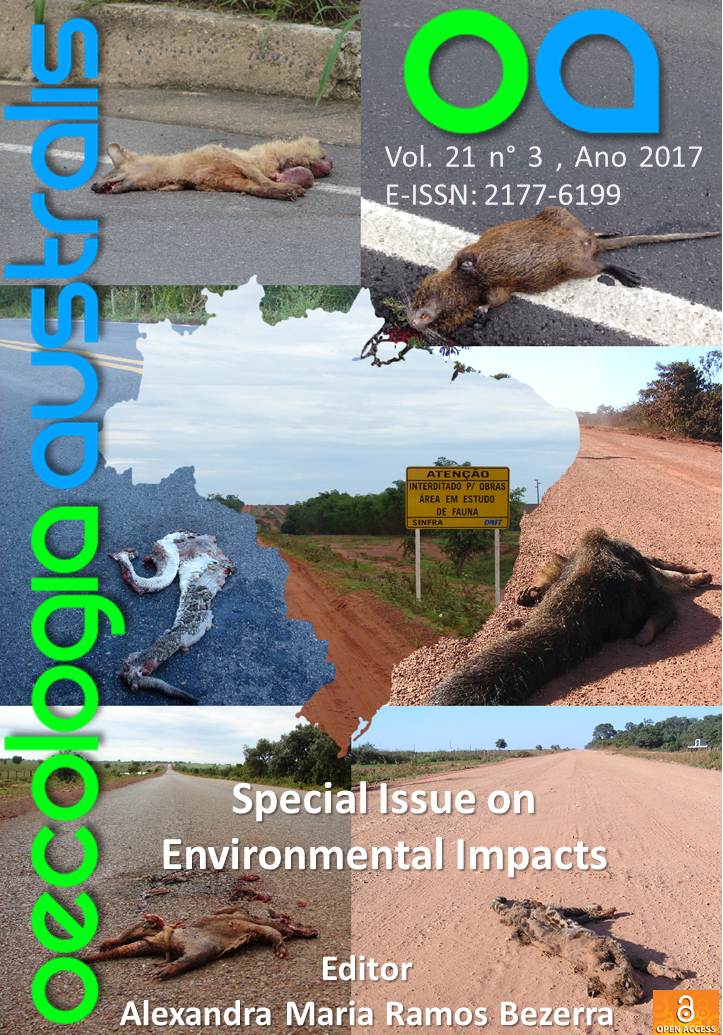IMPACTS OF THE HYDROELECTRIC POWER GENERATION OVER THE FISH FAUNA OF THE TOCANTINS RIVER, BRAZIL: MARABÁ DAM, THE FINAL BLOW
DOI:
https://doi.org/10.4257/oeco.2017.2103.01Keywords:
Amazon, Brazil, conservation, endangered fish species, environmental impactsAbstract
As the eyes of environmentalist's focused on the Madeira, Xingu and Tapajós rivers dams, one unknown project to bystanders will negatively affect an entire watershed, causing impacts far greater than any other megadam constructed in Brazil. Despite the environmental modifications, little is known about the UHE Marabá dam and its impacts over such a splendid cellar of species: the Araguaia- Tocantins basin. Historically the Tocantins River is the most impacted amazon tributary, with several already built dams, though the Araguaia River is free of dams. Building the UHE Marabá dam will affect both rivers, and probably extinguish many species increasing the already high number of Amazonian endangered fish species. Due to its unique evolutionary history among Amazonian tributaries, the endemicity found in the basin is probably higher than any other amazon tributary, inasmuch as some authors consider it as a different watershed, separated from the Amazon. Describing and foreseen the impacts locally and globally are the main goals of the present study.As the eyes of environmentalists and researchers focused on the Madeira, Xingu and Tapajós rivers dams, one unknown project to bystanders will negatively affect an entire watershed, causing impacts far greater than any other megadam constructed in Brazil. Despite the environmental modifications, little is known about the UHE Marabá dam and its impacts over such a splendid cellar of species: the Araguaia- Tocantins basin. Historically the Tocantins River is the most impacted amazon tributary, with several already built dams, though the Araguaia River is free of dams. Building the UHE Marabá dam will affect both rivers, and probably extinguish many species increasing the already high number of Amazonian endangered fish species. Due to its unique evolutionary history among Amazonian tributaries, the endemicity found in the basin is probably higher than any other Amazon tributary, as some authors consider it as a different watershed, separated from the Amazon. Describing and foreseeing the impacts locally and globally are the main goals of the present study.


